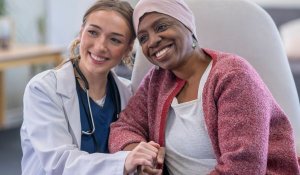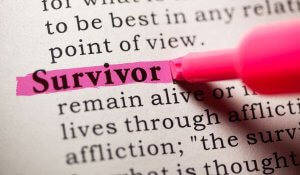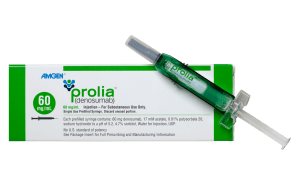
Some individuals are free of cancer after their first bout of treatment, but still struggle to feel like it’s completely behind them. Others experience setbacks as the disease returns, while some face outcomes far different from what they had hoped for. This is where cancer survivorship programs play a role. These programs support individuals throughout their cancer journey, helping them live longer while maintaining the best possible quality of life.
What is cancer survivorship?
Cancer care has often focused mainly on diagnosing and treating the disease. However, studies show that it is also important to help cancer survivors adjust to life after their treatment ends. Survivors may face different challenges than those who are still undergoing active cancer treatment. It is essential for them to know what to expect and have access to the right information and support when they need it.
Quality cancer survivorship care should involve:
- Monitoring to check for the return of cancer or the development of new cancers.
- Helping with the physical, emotional, social, and practical challenges caused by cancer and its treatment.
- Managing other health issues, along with encouraging overall wellness and a healthy lifestyle.
All care is coordinated among the health professionals involved to ensure the best support.
Who is a cancer survivor?
With better treatments and early detection, more people are surviving cancer and living longer. However, they often face different challenges that can appear at different points in their journey. Because of this variety, experts have a range of opinions on how to define cancer survivorship.
Some believe survivorship depends on the progress of treatments, while others tie it to the stage of cancer a person is in. The National Cancer Institute (NCI) defines survivorship as beginning the day a person is diagnosed with cancer. It continues throughout treatment, after treatment, and for the rest of their life.
Cancer survivorship in three stages:
- The first stage, called acute survivorship, begins when a person is diagnosed with cancer and continues until their treatment is finished.
- The second stage, extended survivorship, covers the months right after treatment ends.
- Permanent survivorship refers to those who have been cancer-free for several years.
The need for support for cancer survivors is increasing. In 2022, the National Cancer Institute reported that over 18 million people in the United States are living as cancer survivors, meaning they currently have or previously had cancer. Around 8 million of these individuals have been living with cancer for 10 years or more since their diagnosis. Experts predict that number will grow by 24% in the next decade.
What kinds of cancers do most cancer survivors have?
Women with breast cancer make up the largest group of cancer survivors, followed by men with prostate cancer. These two groups also have the highest 10-year survival rates. Over 98% of men and more than 84% of women are still alive 10 years after being diagnosed.
What are the most common issues facing people who are cancer survivors?
Finishing cancer treatment is often a big relief for many individuals. However, some become accustomed to structuring their days around treatment appointments and regularly seeing their doctors. While they may feel happy to hear they are cancer-free, they might also feel unsure about what to do without their usual routine.
After cancer treatment ends, many individuals, along with their loved ones, believe that all cancer-related worries are over. It’s natural for them to want to leave cancer behind and return to the lives they had before the diagnosis.
Studies show that many cancer survivors struggle to move on completely. They often deal with physical, emotional, psychological, and social challenges. In some cases, survivors may even experience post-traumatic stress disorder related to their cancer experience.
Common physical issues
Individuals who have had cancer might experience ongoing problems or new health issues that appear long after their treatment ends. These are called late effects. Some examples include:
- A second cancer happens when a person develops a new type of cancer. It might occur in the same area of the body as their first cancer, but it is a completely different kind. It can also appear in a different part of the body. This is not the same as a recurrent cancer, which is when the original cancer comes back. Second cancers are becoming more common as cancer survivors live longer.
- Pain is another issue that can occur and may result from either the cancer itself or its treatments. About 40% of people who finish cancer treatment experience chronic pain that may require ongoing treatment with pain medication.
- Fatigue is also a common problem. Many cancer treatments leave people with extreme tiredness that can last even after the treatments are over.
- Some people experience cognitive problems, often called “chemo brain.” This can cause difficulties with decision-making, multitasking, or remembering things.
- Lymphedema, which causes swelling in the arms or legs, can happen after treatments like breast cancer therapy.
- Changes in sexual function can also occur. Individuals treated for breast or prostate cancer may find it harder to have the same sexual experiences as before treatment. Some may choose to use medication to enhance sexual performance.
- Peripheral neuropathy is another side effect of some cancer treatments. This condition can cause numbness or tingling in the hands and feet due to nerve damage.
- Bone loss may happen as a result of treatments such as chemotherapy or radiation, which can weaken bones over time.
- Lastly, some cancer treatments can cause lasting skin issues, such as rashes that do not go away.
Common emotional/psychological issues 
Fear of cancer coming back is one of the most common and long-lasting stresses after treatment. It’s normal for survivors to feel anxious about their health, especially when they can’t stop worrying. Some experience “scanxiety,” which is an intense fear before medical tests, making them feel trapped in a cycle of waiting for results and never fully confident about being cancer-free. Depression is another challenge many cancer survivors face. They may feel hopeless even after finishing treatment or believe they are a burden to their loved ones. Changes in appearance due to cancer or its treatment, like weight loss or pale skin from chemotherapy, can also leave survivors feeling self-conscious and uneasy about how they look.
Social issues
Family relationships can become strained when someone is diagnosed with cancer and undergoes treatment. Often, family members are the first to step in and provide support. While they are usually happy to help, they may not realize that even after treatment ends, the person who had cancer may still need their assistance and understanding.
Work relationships can also be challenging. Many cancer survivors want to return to their jobs but worry that their new routines or limitations might not fit well with workplace expectations.
There can also be a stigma associated with being a cancer survivor. Some people may fear that others see them as being at a higher risk of getting cancer again.
Financial concerns are another common issue. Cancer survivors might stress over the costs of follow-up care, additional treatments, or new expenses like housing or transportation.
Cancer survivorship support
Cancer survivorship care requires a collaborative approach, similar to cancer treatment. The survivorship team might consist of:
- Oncologists, who are doctors who specialize in cancer treatment. People with advanced or recurring cancer tend to see their oncologist more often than those who were treated for early-stage cancer.
- Primary care providers, who play a large role after cancer treatment has successfully removed signs and symptoms of the disease. In these cases, patients may visit their primary care provider more frequently than their oncology team.
- Psychologists, who often help cancer patients who experience depression or anxiety. Psychologists trained in working with cancer patients can provide counseling and other forms of therapy to support emotional well-being.
- who assist individuals in dealing with the challenges of life after cancer, such as adjusting to new routines. They may also connect patients with helpful national and local resources related to cancer survivorship.
- Oncology-certified dietitians, who work with patients who have difficulty eating after completing their cancer treatment. These specialists create personalized plans to help individuals maintain a healthy diet.
Where can I find help and support for cancer survivorship in the USA?
The Cancer Survivors Network serves as a supportive community for individuals impacted by cancer, including patients, survivors, caregivers, families, and friends. It provides a secure space where members can connect with others who have similar experiences and interests.
The NIH Office of Cancer Survivorship offers a wide range of support tools for individuals recovering from cancer and those caring for them.
By providing comprehensive cancer survivorship programs, we can ensure that survivors not only live longer but also thrive with a better quality of life. Whether through monitoring, emotional support, or promoting overall wellness, these efforts can make a positive impact on the lives of survivors and their families.
FAQs
What qualifies you as a cancer survivor?
The American Cancer Society defines a cancer survivor as anyone who has been diagnosed with cancer, no matter what stage of the disease they are in.
How long can a cancer patient live?
Cancer survival rates are often measured over five years and shown as percentages. These rates can differ depending on the type of cancer. For example, the five-year survival rate for bladder cancer is 77%. This means that out of 100 people diagnosed with bladder cancer, 77 are still alive five years later.
Will I always need cancer survivor support?
It varies based on the individual. Some finish cancer treatment and, over time, may no longer need regular checkups or follow-up tests. They might be thriving in life after treatment. Others, however, who have ongoing cancer, a second diagnosis, or advanced cancer, require continued medical care and different types of support for their recovery.
How can I lower my risk of developing another cancer?
Lifestyle changes can help lower the risk of developing another cancer. These changes include avoiding certain risk factors, eating a healthy diet, and staying active.
Risk factors are habits or choices that can raise the chance of getting cancer. For example:
- Smoking: Quitting smoking and avoiding second-hand smoke can improve overall health and lower cancer risk.
- Alcohol: Drinking alcohol increases the risk of some cancers, so limiting alcohol or stopping its use may be helpful.
- Sun exposure: Too much sun can lead to skin cancer. Some medications can also make skin more sensitive to sunlight. It’s important to use sunscreen and take other steps to protect the skin. A healthcare provider can recommend the best options.
How is cancer survivorship planning helpful?
Cancer survivorship can be shaped to meet an individual’s unique needs. For example, a survivorship plan may focus on living a healthier lifestyle after cancer treatment. It might also include advice on how to share information about the condition, helping others understand the support and care needed during the transition to life after cancer.



















